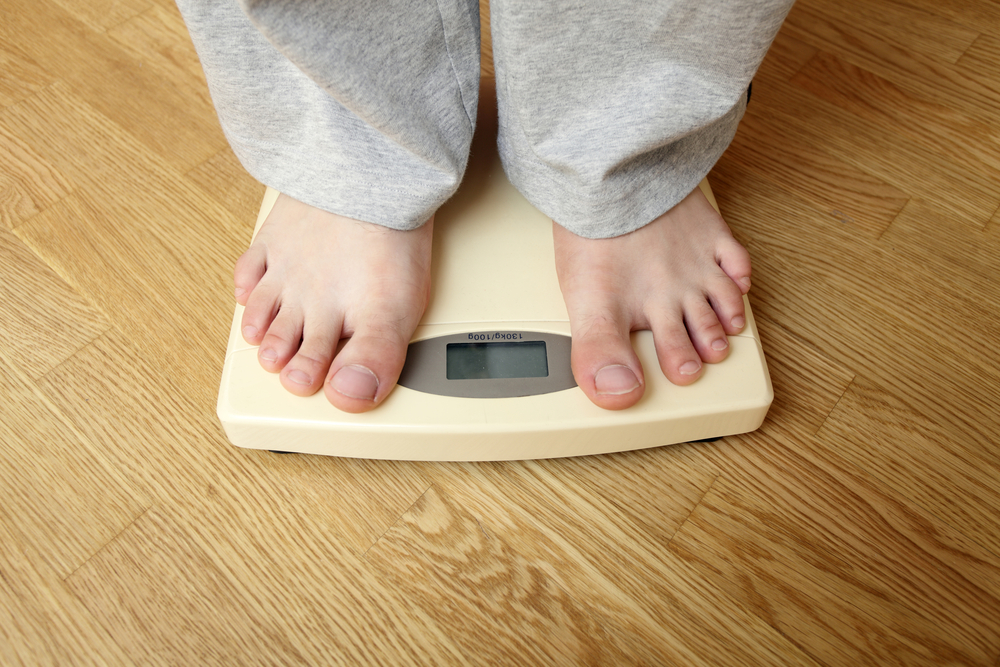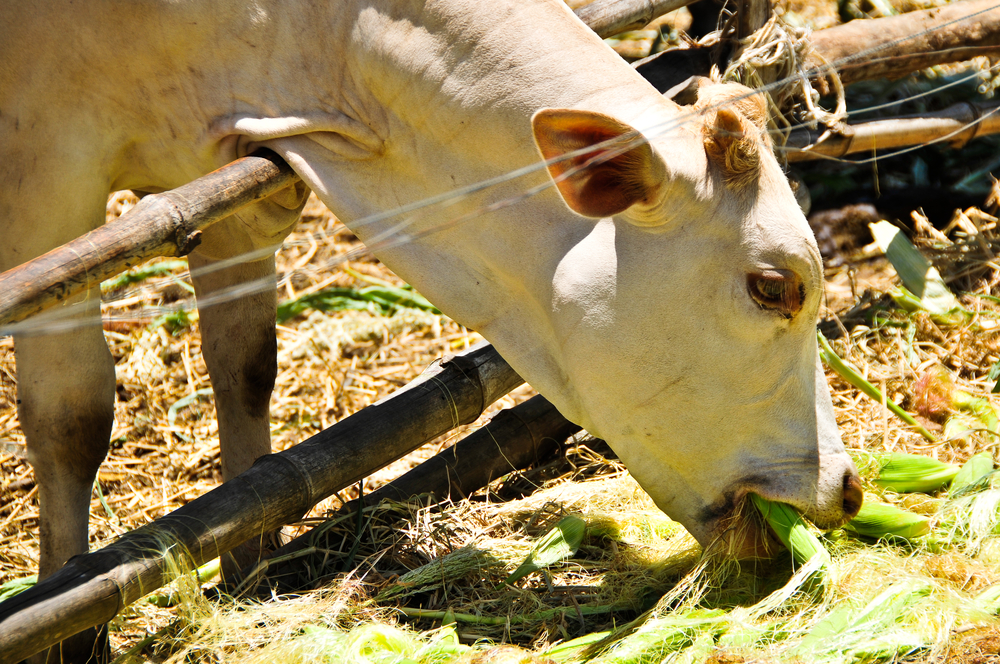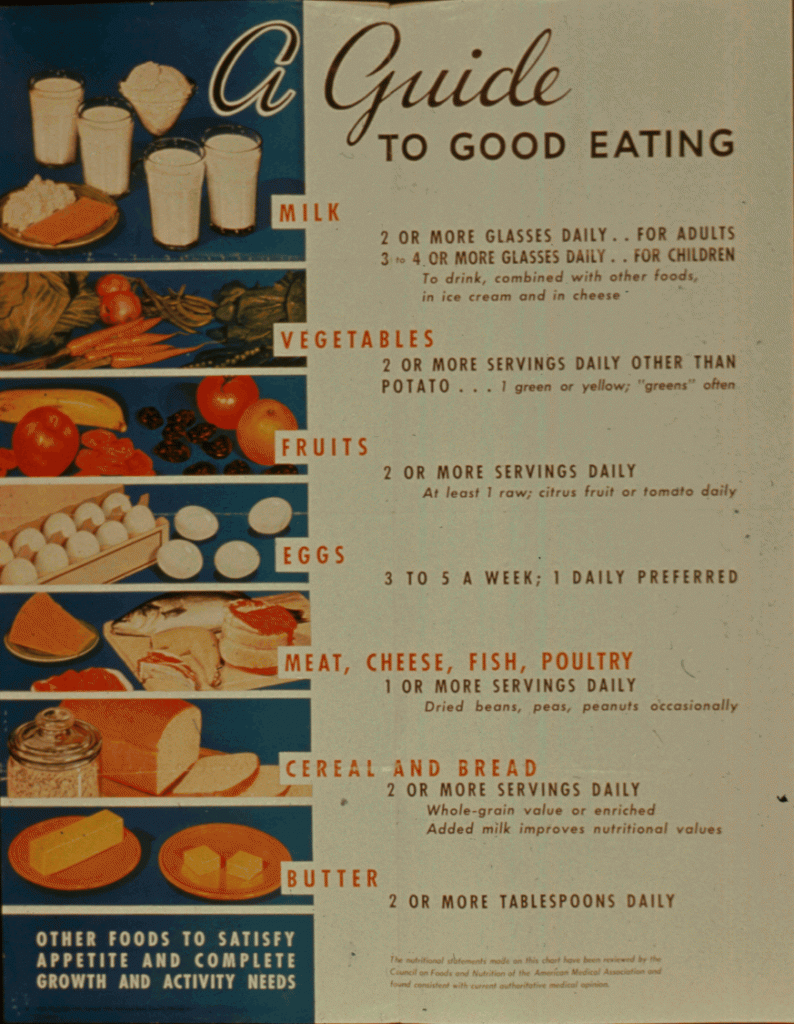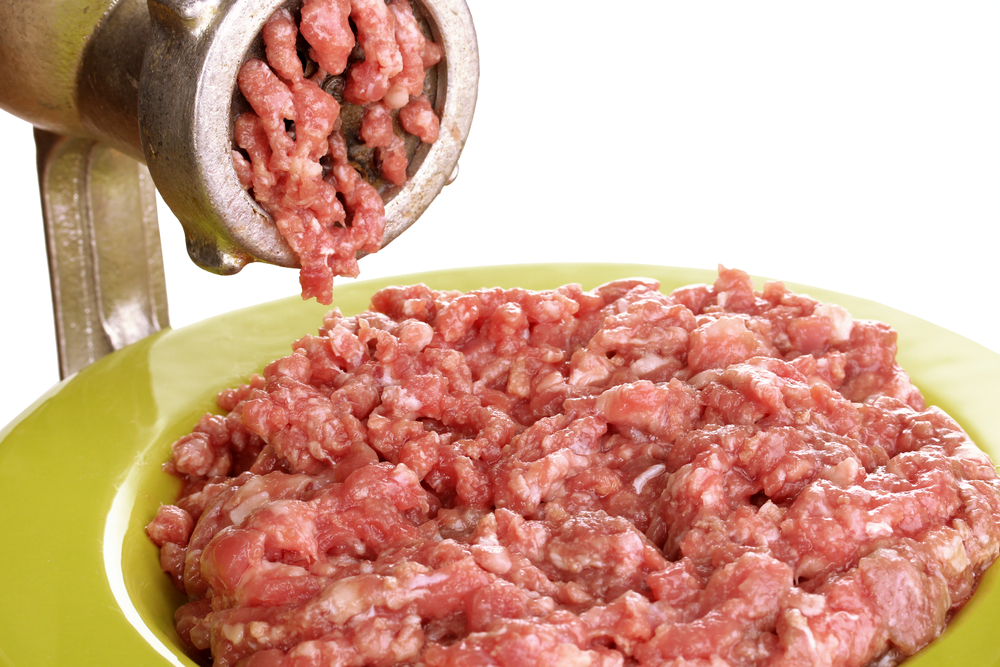Look around as you drive or walk, well, just about anywhere. What you see is a vast number of quick foods, whether neatly packaged up in a convenience store or available at a drive-thru for 99 cents. It can be tempting.
Now, look around a little more. What else do you see? Obesity. Dull, sickly-looking skin. Dark under-eye circles. People moving as if they’re decades older than they actually are because they’re worn down, they have no energy anymore.
One’s contributing to the other. What happened to the American diet and where did we go wrong?
What’s the Standard American Diet and What Is It Doing to the Western World?
You probably have a pretty good idea of what the Standard American Diet consists of (let’s just say it’s no coincidence it’s often just shortened to SAD), but I tend to narrow in on just a handful of components when I think of it sometimes, so let’s take a look at all it entails:
- High meat intake (especially red meat)
- Dairy, especially high-fat kinds
- Treats made from refined sugars
- Processed foods (including, but not limited to, more meat)
- Sugary drinks
- Fried foods
- Lots of vegetable oil
- Refined grains
A whole lot of “nothing” calories you can get at any drive-thru, right? All the super-easy stuff you can grab on a road trip or when you only have a few minutes to toss some lunch down your throat and get back to work. Also? The cheap stuff.
Those nutritionally void foods come with a smorgasbord of problems, so they’re not really saving you any time or money. They’re just delaying the inevitable: less time (taking sick days…or worse) and less money (from all the medical bills and prescriptions).
The Consequences of the SAD Diet
I won’t bore you with a lot of heavy statistical information. You know how prevalent obesity, diabetes, cardiovascular diseases, cancer, and other illnesses are in our society.
I do want to share just a handful of numbers from The American Journal of Clinical Nutrition, though. I was absolutely shocked.
- 65% of people in the United States over 20 years old are overweight or obese.
- Over 65 million Americans have at least one type of cardiovascular disease.
- 50 million are hypertensive.
- 11 million suffer from type 2 diabetes.
So much of this could have been prevented with a whole foods based diet. So much. Let’s break down some of the components of the SAD and see how they came to be.
More, More, More! The Increased Use of Refined Sugar and Oils
You’d be hard-pressed to find a food that’s part of the Standard American Diet that didn’t have extreme amounts of sugar, oil, or both tucked away inside.
Are You Eating Your Body Weight in Sugar Every Year?
Refined sugar consumption has been climbing ever since the Industrial Revolution. Since that’s plenty of time (about 200 years), it’s obviously had time to become quite a problem. Can you believe that in the year 2000, each American consumed, on average, 155 pounds of refined sugar? That’s just about the weight of an average woman!
Considering that’s about a 35-lb increase in refined sugar consumption since 1970, I wonder how much worse it is now. 165? 180?
I wanted to go see a movie with a couple of friends a few nights ago. I like to go with a full tummy so I’m not too tempted to snack on anything there, but they wanted to hit up the snack bar before we found our seats so I waited with them. Jumbo sodas with high-fructose corn syrup were paired with all kinds of candies and ridiculously gooey, sticky treats were everywhere. Suddenly I could see how easy it could be to eat your body weight in sugar each year.
Oil Is Another Slippery Slope
Maybe your great-grandmother used vegetable oil (it’s been growing in popularity since 1909), so you always assumed it was okay. I’m guilty of that. A grandma knows her way around a kitchen, and who are you to ask questions, right?
The American Journal of Clinical Nutrition says that in the 100 years that passed between 1909 and 1999, the use of vegetable oils in the American diet has grown at quite a ridiculous rate (okay, the ridiculous part’s my wording). There’s been an increase of 130% in cooking and salad oils, a 136% increase in shortening, and a whopping 410% in margarine. I feel heavier just typing that. I’m sure I ate my fair share over the years before taking better control of my diet—especially margarine. Ick!
These ingredients sneak into even innocent-seeming snacks, frozen dinners, and just about anything pre-packaged or purchased from a restaurant that doesn’t keep its focus on whole, healthy foods.
Be mindful. Read labels. Or better yet, don’t buy foods that come with labels.
High Demands for Meat Are Met at Any Cost
It’s no secret that Americans love their meat. Red, preferably, but as long as there’s an animal protein on the plate at almost every meal, it’s usually considered a well-rounded success.
How Much Meat Do Americans “Need”?
There are roughly 317,816, 522 people living in America right now. (That number will be different when you visit the population calculator because it’s always changing, but it’s close.) A 2008 study reported that only about five percent of Americans are vegetarian. Half of those are vegan. These numbers may be a little higher now, but let’s just shoot for an estimate here.
Five percent of 317,816,522 is right around 15,890,826. That leaves about 301,925,696 people who want meat—a lot of the time, and probably a lot on their plates when they get it.
How on earth can production ever be met and maintained for that number of people?
Crowding. Antibiotics. Cheap feed. Whatever gets the job done, right?
The Earliest Days
I found an interesting article on NPR that shows exactly how the meat industry turned into what it is today. This part of the American diet started with America itself. The colonists were excited to find that they had so much extra space compared to what they had back in England, and they used it to raise a whole lot of cattle.
Over time, more and more people moved into the cities, but they still wanted their meat. The farmers left behind couldn’t keep up with the meat demands on their own, so everyone got together and decided, “Hey, what if the government helped make sure all of this could run like a well-oiled machine? Farmers will keep their costs down, demand will be met, and everybody will be happy?”
Well, feeding the cows corn was cheap. It got them fatter, faster too. So that happened. But cows are supposed to eat grass…
The Introduction of Antibiotics to Feed
In 1948, it got really easy to raise more livestock than should have been possible within a certain amount of space. The discovery of aureomycin (an antibiotic) and the addition of it to animals’ food supplies led to “better health” for them when they were all confined together.
And boy, is that crowding thing an issue. Eighty percent of the beef market is controlled by just four companies. Four. So what happens if one cow gets sick? Thousands of cows are theoretically exposed to that illness. And guess what? That risk is passed on to the American people.
Meat is now about half as expensive as it was in 1970…but at what real cost?
Dairy’s Bad, but It Just Gets Worse
If you’ve been visiting this blog for any amount of time, you know Kim’s (and my) stance on dairy is that it’s not even something you should enjoy occasionally.
Why Is Dairy So Bad?
Just in case you’re new here, I’ll go over a few of the reasons we think you should swear off dairy starting today, even if you don’t make any other changes to your diet.
- Milk from a cow is for that cow’s babies. It’s not natural for a human (baby or adult) to drink it.
- The protein in milk, called casein, has been linked to autism and certain types of cancer.
- Our bodies don’t have the enzymes to break casein down effectively.
- It clogs up the body, creates more mucus, and makes digestion so difficult, it could make it feel next to impossible to ever lose weight.
- When you consume dairy, you’re probably getting a big ol’ dose of hormones and drugs, too. Antibiotics that were used to keep the cows well (just like in the meat industry) and rBGH (recombinant bovine growth hormone) to keep them producing enough milk to meet the demand.
- It removes calcium from the bones because it’s so acidic. So much for drinking milk for strong bones.
I get it. It was hard for me to give it up, too. I loved my ice cream growing up, and lattes and hot chocolate made with cow’s milk were comfort drinks of mine for years. But your body will thank you. And though high-fat dairy is the especially prominent type in the SAD, this goes for low-fat choices, too (yes, put down your spoon and go toss the Greek yogurt out).
So dairy products have never been natural for us to drink or eat, but when did it get even worse?
The short answer: a chunk of time extending from the 1940s through the 1970s really shifted our perception of dairy in America.
The Recent History of Dairy and Its Role in the American Diet
You’re probably familiar with the MyPlate recommendations and the food pyramid before that, but the government’s been heavily recommending dairy (and meat) since well before those were created.
In 1943, the USDA wrote up recommendations called The Basic 7, which included two or more glasses of milk per day for adults and three or four glasses for children. From there, we’ve had The Basic Four, The Food Wheel, The Food Guide Pyramid, MyPyramid, and MyPlate. All have included dairy.
Why?
Not health. Money.
The dairy industry (meat too) has an outrageous amount of influence. If USDA advisory committees attempt to draw up new guidelines that don’t support dairy’s “vital role” in a healthy American diet, agriculture industries encourage them to reconsider. Know what I mean?
Let’s just say that at one point, at least six of the 11 Dietary Guidelines Advisory Committee members had financial ties to the meat and dairy industries. What?!?! And this kind of thing has been going on since the 50s! Can you see a correlation between the dietary guidelines and the not-so-subtle nudging to drink milk and eat yogurt?
Hormones and Antibiotics in Milk
Pretty dirty, but it gets dirtier (in a different way). The added hormones can really confuse the human body.
rBGH, which is given to the cows to increase milk production and makes its way into that milk, has been linked to breast cancer, colon cancer, and early onset puberty in girls. The FDA approved rBGH in 1993.
To add insult to injury, the poor cows that are injected with rBGH often experience mastitis as a result. I’ve heard some of my mom friends complain about how painful that is. Guess how it’s treated? Antibiotics.
The Introduction of Pesticides and Chemicals on Crops
It seems to me that the 1940s were really the catalyst in the overall scheme of America’s dietary habits. The idea of spraying crops with chemicals in the name of keeping the pests from devouring them first also has its roots in that era.
I’m sure there were other methods of protecting crops before DDT, but this one’s kind of a huge deal. First produced and used for protection against malaria, typhus, and other similar diseases for members of the military and civilians in the 40s, it quickly crossed over into a territory I personally wish it’d never touched—crops.
DDT was later proven to be harmful not only to pests, but to the environment, wildlife, and humans. It was banned in 1972.
That doesn’t mean the idea of spraying crops with chemicals in order to keep it “safe” (from pests) was put to rest. Others, like methoxychlor (also banned as of 2003) followed.
I don’t know about you, but the track record’s not looking so good for these pesticides.
I can’t happily accept that the newest one (whatever it may be at the time) is as harmless as it claims to be. What do you think?
Processed Foods Ready in Minutes Sounded Great, But…
About the time everyone became such busy, busy bees outside of the home in the 1940s, America lost touch with where its food came from and how it was prepared. Convenience prevailed through the years as life became busier and busier for men and women alike.
Who wouldn’t love being able to go to the store to buy meals that were mere minutes from being ready to eat?
It probably felt almost as good as winning free maid service—indefinitely! I’m sure the average person didn’t think, “Hey, wait, what’s really in this?” It was just a perceived perk to living in such a rapidly changing time.
A Brief Timeline of Processed Foods
You know how sometimes a handful of things all work together to create one colossal mess? You can’t just point your finger at one thing and say, “There. That caused it.” Processed foods have a similar history.
Yes, everyone was busy and spending less time in the house, which made processed foods more appealing, but there was more going on.
In the 1940s…
America had to figure out a way to get food and drinks to the troops. What experts learned in that process was later extended to providing food to the American public in new, more convenient forms (for example, instant coffee).
In the 1950s…
This period brought more widespread television viewing (and advertising possibilities), highways with quick-fix food stops dotted along the sides, microwaves, TV dinners, and more. After the dark days of the 40s, this light, quick, easy way of life was probably welcomed with open arms.
In the 60s…
Things got uglier. High-fructose corn syrup made its way onto the scene as a cheaper alternative to sugar. Advertising really took off, and with it, the public was more exposed to processed food options, like soft drinks, frozen veggies in butter sauce, and processed meats.
You know how advertisements can get to you, if you’re subjected to them enough. How many people succumbed to their curiosity about Coke or canned meat after seeing them on TV so many times?
The processed food “trend” had caught on and it had no intention of slowing down. Customer demands changed based on dietary recommendations (so there was a push for light, low-fat, sugar-free, or low-calorie versions of new favorites, for example), but there was a steady churning out of new pre-packaged foods with questionable ingredients.
What Can You Do About It?
Get back to the basics. Eat real food. Learn to love and care for yourself and inspire others. Show them that it doesn’t take a lot of money or a tremendous amount of time to eat healthy. Take healthy options to work, picnics—maybe even the movies (I won’t tell!).
What are some of your biggest tips for avoiding the pitfalls of the SAD diet? Have you ever experienced a moment when you realized you were inspiring someone else to make changes in their diet and their life?








Hi Kimberly,
I love your blog. One question though. I have a 14 month old. I’m a working mom that continues to pump at work (most folks stop at 1 year pumping) and then I nurse morning and nights and the 3 days I’m with him (I have Friday’s off). Naturally, he’s on solids and eats like champ, but they still need calcium and dairy – something EVERY pediatrician I’ve spoken to or read says is critical. We alternative almond milk and organic cow’s milk, in addition to my milk, when I’m not at home. So what’s your laternative, because I know that almond milk doesn’t have all the nutrional benefits of cows milk. And I live in SAn Francisco a city that is open to really forward thinking
Apologies … I had some typos that I was fixing in my previous post, but my mouse accidentally hovered over submit and did so before I was read.
Microwaves were not available in homes until the late 1960’s. It seems like you are spewing a lot of propaganda here.
No propaganda here ms!
“A truth’s initial commotion is directly proportional to how deeply the lie was believed. When a well-packaged web of lies has been sold gradually to the masses over generations, the truth will seem utterly preposterous and its speaker, a raving lunatic.” Dresden James
Our North America diet is a cancer, immune hampering, and cardiovascular disease inducing diet. It’s a crime that appropriate government organization are not intervening. It’s a matter of time, but until then millions will continue to die from these diet inducing chronic illnesses. I’m an medical specialist at a high power academic medical institue here in Montreal, and not one of my hundreds of colleague consider diet as a very important factor in the production on progression of 90% of the diseases that I see on a daily bases.
Medical research is evolving and hopefully we are in the presence of a revolutionary change towards a whole food plant based diet.
Wow! I know this was posted awhile ago but thank you for the interesting information. I was sitting here thinking how did America get to where it’s at with our “diet” and found your article. So thanks again for the eye opening material. ????????
Hi Raine! Thanks for reading and I’m so glad to hear you’ve learned something new from this post! Stay healthy! xx
I don’t necessarily buy into a great deal of Kimberly’s message, it should be taken with a grain of salt. It isn’t necessarily unsafe, but very little of it is supported by peer reviewed medical journals, and her website’s own disclaimers direct you towards secondary opinions for nursing and pregnant moms as well as those with medical conditions. She’s selling feel good holistic nutrition to healthy people. That said, I actually couldn’t eat dairy when I nursed either of my children. (non human) Dairy intolerance isn’t uncommon among babies (well documented with the APA, LLL, and Kathleen Huggins). I’d use alternative milks that are calcium fortified, lots of leafy dark greens, and make sure you are getting plenty of healthy fats and WATER.
You say dairy is bad and I get why but I hear so much good things about kefir. I was wondering about your thoughts on it.
I wish that you would site scientific references to studies that prove what you are posting. I believe in what you say because I live it and that’s enough proof for me. But my husband does not agree with any of your views on dairy. He wont believe anything unless it has scientific backing from a reputable source, preferably a medical journal. Why don’t you site sources of your information?
Because she has none…she is attempting to push her way of eating by fitting anything she can find to support what she says….
Ms. Is a hater… I believe Kimberly. Her record speaks for it’s self. And her vegan method of dieting gets you results. She use to eat like us. But now she speaks from experience, and what she found works best for her ( and us). Bee-otch!
Similar to Beth, I have a child I am nursing. He is only 8 months. We do some solids, but not that much. Soon the doc will start pushing meat and then at a year they push milk. I would love to hear how you would feed you child throughout the different stages if you had a child. I am going to continue nursing through 2 years or whatever feels right. Thanks in advance!
Hi, beth. I would like to say a few things, first i am only 17 years old but i am the eldest of 7 children we are all very healthy and smart and all homeshcooled! :) we (are) all from the same parents witch i get asked a LOT more then you would think. But im trying to say my mother breastfed each and everyone of us until we were 2 or just about 2…. the reason for stopping? Because she was pregnant and didn’t have enough energy to feed and make a baby lol. My mom didn’t really ever give us cows milk, when we got older some of my siblings loved it and had some all the time! And we realised not to long ago that they had allergies, stuffy noses, bellies hurting, all around not feeling so swell. Then we switched to unsweetened vanilla almond milk even got my dad (who likes to keep things simple, and the same) to drink it and loves! It and eveyone of them feel better, feel lighter after having some. It just goes to show how amazing god really is he gives us all we need! Oh p.s. while she (my mom) is breastfeeding as they get older we tend to introduce more veggies and fruits and grains into their diets, organic is best and keeps the full babies will let u know what they need and will show u when they are really ready to start eating whole foods! :) hope this helps at all.
Thanks for reading annalee
For those choosing not to consume the fair offered at the movies–either by choice or due to food sensitivities, intollerance, etc., we should be allowed to bring in our own healthy snacks!! I have believed this since I was diagnosed years ago with allergies to corn, wheat, soy, tomatoes, tuna, etc. And learned from reading Kim’s books and supporting materials about how exposure over time to inordinate amounts of processed foods infused with these ingredients evidently caused the food sensitivities. These establishments and others are slowly trying to catch on by offering gluten free and organic snacks–but it will be interesting to see veggies and fruit, etc. offered at the movies in the future!!
Great article. And alll I have to say to anyone who is skeptical about dairy being bad is eliminate it from your diet for 3 to 4 weeks and see how you respond. Maybe the skepticism will disappear. There’s no better solid proof than personal experience.